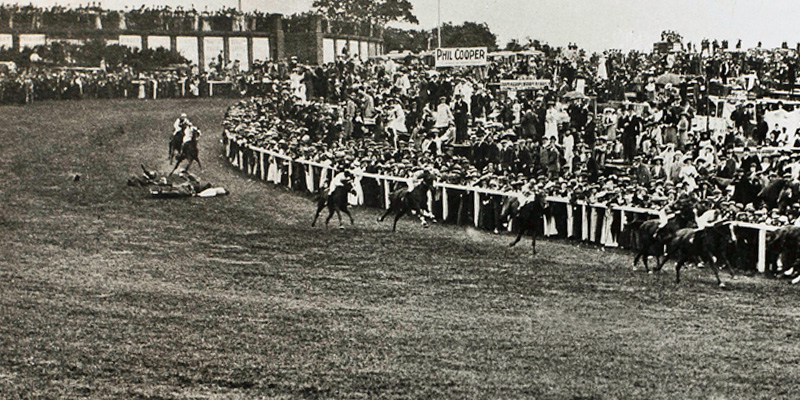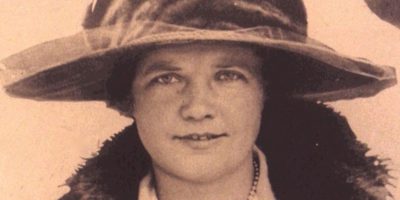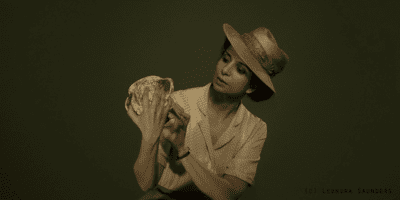Dr. Diane Atkinson is a prominent author of history books and biographies. She was born in the North-East and educated in Cornwall and London, where she completed a Ph.D. on the politics of women’s sweated labour. She taught history at secondary schools in London before moving to the Museum of London, where she worked as a lecturer and curator, specialising in women’s history.
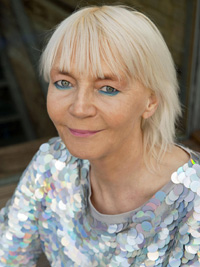
“…they pioneered political marketing and branding by using their colours and slogan Votes for Women…”
A lifelong love of history
I loved history as a child. I studied it and taught it, and when I went to work at the Museum of London I was thrilled to discover their suffragette collection, which had been collected by ex-suffragettes to commemorate the role of the Pankhurst family and the militant campaign. To have unrestricted access to this world class archive was a huge privilege.
My love affair with the suffragettes started in 1981 and grows every day. Reading their extraordinary memoirs and newspaper accounts of their brave struggle made me want to tell their stories to a wider audience.
Documenting the struggle of the suffragettes
It was when I read the first-hand accounts of women starving for days and being fed by force three times a day, sometimes for weeks at a time, upset and angered me so much that I was determined to tell their story. Also, they were so modern in their campaigning methods – they pioneered political marketing and branding by using their colours and slogan Votes for Women. In 1992 I persuaded the Museum to put on a major exhibition which I curated.
Campaign for women’s suffrage
The campaign for the women’s suffragette started in the mid-1860s but had stalled but the turn of the century. Whenever it was mentioned in the House of Commons the members laughed.
In 1903 Mrs Pankhurst and her daughters founded the Women’s Social and Political Union at their home in Manchester. Their view was that only direct action would get women the vote and adopted the slogan Deeds not Words.
Their methods were shocking for the day and in 1906 they acquired the nickname ‘suffragettes’, which they happily embraced. We know so much more about the Pankhursts and Emily Wilding Davison, who died after her protest at the Derby in 1913, because of their enormous courage and outrageous tactics – stalking politicians, rooftop protests, smashing windows and later burning down empty buildings, and also because of their protests in prison which resulted in hundreds of women going on hunger strike and being force-fed.
Emily Wilding Davison gave her life so that we can vote: to me it feels wrong that some women do not use their vote.
Two suffrage movements
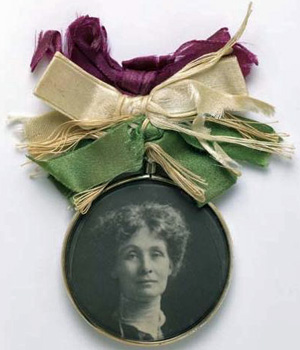
There is quite a lot of misunderstanding about the suffragists and the suffragettes: many people assume they were sworn enemies. They were not – they both fought for the same goal, votes for women. They were often close friends, went to each other’s events, walked in each other’s processions and wore each other’s badges.
They differed in their methods: the suffragists were moderate, constitutional and law-abiding; the suffragettes were not! The crunch came in 1912 when militancy escalated and the suffragists distanced themselves from the suffragettes.
100th anniversary
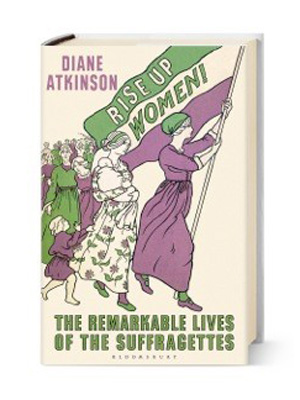
I will be spending this year promoting my book and working on ideas for a new project.
http://www.dianeatkinson.co.uk/
https://twitter.com/dithedauntless
https://www.instagram.com/dianeatkinsonsuffragette/
Main image – Emily Wilding Davison throws herself under the King’s horse during at Derby at Epsom in 1913: By LSE Library [No restrictions], via Wikimedia Commons
Emmeline Pankhurst Portait badge image credit: By Women’s Social and Political Union (Museum of London) [Public domain], via Wikimedia Commons

